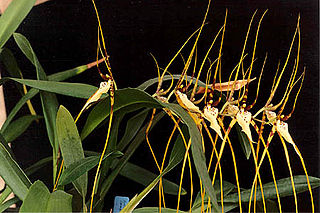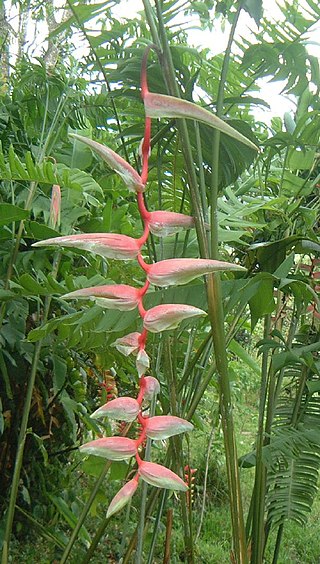
Petals are modified leaves that surround the reproductive parts of flowers. They are often brightly colored or unusually shaped to attract pollinators. All of the petals of a flower are collectively known as the corolla. Petals are usually accompanied by another set of modified leaves called sepals, that collectively form the calyx and lie just beneath the corolla. The calyx and the corolla together make up the perianth, the non-reproductive portion of a flower. When the petals and sepals of a flower are difficult to distinguish, they are collectively called tepals. Examples of plants in which the term tepal is appropriate include genera such as Aloe and Tulipa. Conversely, genera such as Rosa and Phaseolus have well-distinguished sepals and petals. When the undifferentiated tepals resemble petals, they are referred to as "petaloid", as in petaloid monocots, orders of monocots with brightly colored tepals. Since they include Liliales, an alternative name is lilioid monocots.

Pollination is the transfer of pollen from an anther of a plant to the stigma of a plant, later enabling fertilisation and the production of seeds, most often by an animal or by wind. Pollinating agents can be animals such as insects, birds, and bats; water; wind; and even plants themselves, when self-pollination occurs within a closed flower. Pollination often occurs within a species. When pollination occurs between species, it can produce hybrid offspring in nature and in plant breeding work.

Heliconia is a genus of flowering plants in the monotypic family Heliconiaceae. Most of the ca 194 known species are native to the tropical Americas, but a few are indigenous to certain islands of the western Pacific and Maluku in Indonesia. Many species of Heliconia are found in the tropical forests of these regions. Most species are listed as either vulnerable or data deficient by the IUCN Red List of threatened species. Several species are widely cultivated as ornamentals, and a few are naturalized in Florida, Gambia, and Thailand.

Monstera deliciosa, the Swiss cheese plant or split-leaf philodendron is a species of flowering plant native to tropical forests of southern Mexico, south to Panama. It has been introduced to many tropical areas, and has become a mildly invasive species in Hawaii, Seychelles, Ascension Island and the Society Islands. It is very widely grown in temperate zones as a houseplant.

Xanthosoma is a genus of flowering plants in the arum family, Araceae. The genus is native to tropical America but widely cultivated and naturalized in other tropical regions. Several are grown for their starchy corms, an important food staple of tropical regions, known variously as malanga, otoy, otoe, cocoyam, tannia, tannier, yautía, macabo, ocumo, macal, taioba, dasheen, quequisque, ʻape and as Singapore taro. Many other species, including especially Xanthosoma roseum, are used as ornamental plants; in popular horticultural literature these species may be known as ‘ape due to resemblance to the true Polynesian ʻape, Alocasia macrorrhizos, or as elephant ear from visual resemblance of the leaf to an elephant's ear. Sometimes the latter name is also applied to members in the closely related genera Caladium, Colocasia (taro), and Alocasia.

Brassia is a genus of orchids classified in the subtribe Oncidiinae. It is native to Mexico, Central America, the West Indies, and northern South America, with one species extending into Florida.

The rufous-breasted hermit or hairy hermit is a hummingbird that breeds from Panama south to Bolivia, and on Trinidad, Tobago and Grenada. It is a widespread and generally common species, though local populations may change in numbers and disappear altogether in marginal habitat.

Myriophyllum aquaticum is a flowering plant, a vascular dicot, commonly called parrot's-feather and parrot feather watermilfoil.

Heliconia chartacea is a species of Heliconia native to tropical South America.

Heliconia bihai of the family Heliconiaceae is an erect herb typically growing taller than 1.5 m. It is native to northern South America and the West Indies. It is especially common in northern Brazil and the Guianas but also found in Hispaniola, Jamaica, the Lesser Antilles, Puerto Rico, Trinidad, Venezuela and Colombia. Other names by which the plant is commonly known include balisier and macawflower.

Heliconia tortuosa is an herbaceous tropical perennial commonly found in secondary succession in montane forests in Central America and southern Mexico. It is moderately shade tolerant. It has also been widely cultivated as a garden plant for its showy, usually twisted inflorescences.

Heliconia rostrata, the hanging lobster claw or false bird of paradise, is a herbaceous perennial plant native to El Salvador, Peru, Bolivia, Colombia, Venezuela, Costa Rica, and Ecuador, and naturalized in Puerto Rico. Other heliconias grow in an upright position, their cup-shaped flower bracts storing water for birds and insects. This plant, however, has downward-facing flowers, the flowers thus providing a source of nectar to birds.
Parrot's beak may refer to:
The name is derived from the Greek word Ἑλικώνιος (helikṓnios) meaning Lobster Claws, another word for Heliconias. The second part is from the Latin word Excelsa, sometimes meaning tall, probably meaning "tall Lobster Claw" all together. Heliconia excelsa is a species of plant in the family Heliconiaceae. It is endemic to Ecuador. Its natural habitat is subtropical or tropical moist lowland forest. At its maturity, it can reach a height of 8' to 12' or 15' in full sun to half shade.Heliconia excelsa, commonly known as the giant heliconia or hanging lobster claw, is a species of flowering plant in the family Heliconiaceae. It is native to the rainforests of Central and South America, including countries like Costa Rica, Panama, Colombia, and Ecuador.

Ficus aurea, commonly known as the Florida strangler fig, golden fig, or higuerón, is a tree in the family Moraceae that is native to the U.S. state of Florida, the northern and western Caribbean, southern Mexico and Central America south to Panama. The specific epithet aurea was applied by English botanist Thomas Nuttall who described the species in 1846.
Ficus maxima is a fig tree which is native to Mexico, Central America, the Caribbean and South America south to Paraguay. Figs belong to the family Moraceae. The specific epithet maxima was coined by Scottish botanist Philip Miller in 1768; Miller's name was applied to this species in the Flora of Jamaica, but it was later determined that Miller's description was actually of the species now known as Ficus aurea. To avoid confusion, Cornelis Berg proposed that the name should be conserved for this species. Berg's proposal was accepted in 2005.

Roystonea regia, commonly known as the Cuban royal palm or Florida royal palm, is a species of palm native to Mexico, the Caribbean, Florida, and parts of Central America. A large and attractive palm, it has been planted throughout the tropics and subtropics as an ornamental tree. Although it is sometimes called R. elata, the conserved name R. regia is now the correct name for the species. The royal palm reaches heights from 50 to over 80 feet tall. Populations in Cuba and Florida were long seen as separate species, but are now considered a single species.

Musa coccinea, commonly known as scarlet banana or red-flowering banana, is a species of flowering plant in the banana and plantain family Musaceae, native to tropical China and Vietnam. It is a bat-pollinated evergreen perennial, placed in section Callimusa, having a diploid chromosome number of 2n = 20.

In evolutionary biology, mimicry in plants is where a plant organism evolves to resemble another organism physically or chemically, increasing the mimic's Darwinian fitness. Mimicry in plants has been studied far less than mimicry in animals, with fewer documented cases and peer-reviewed studies. However, it may provide protection against herbivory, or may deceptively encourage mutualists, like pollinators, to provide a service without offering a reward in return.

Heliconia latispatha is a plant species native to southern Mexico, Central America and northern South America and naturalized in Florida and Jamaica. It is an herbaceous perennial up to 4 m tall, with leaves resembling those of bananas. The inflorescence is erect, up to 45 cm long, with red or orange bracts subtending green, yellow or orange flowers.











